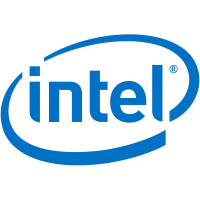Intel Celeron 2002E vs AMD Turion II N550
Comparative analysis of Intel Celeron 2002E and AMD Turion II N550 processors for all known characteristics in the following categories: Essentials, Performance, Memory, Graphics, Graphics interfaces, Compatibility, Peripherals, Security & Reliability, Advanced Technologies, Virtualization. Benchmark processor performance analysis: PassMark - Single thread mark, PassMark - CPU mark.
Differences
Reasons to consider the Intel Celeron 2002E
- A newer manufacturing process allows for a more powerful, yet cooler running processor: 22 nm vs 45 nm
- Around 40% lower typical power consumption: 25 Watt vs 35 Watt
- Around 24% better performance in PassMark - CPU mark: 1091 vs 877
| Specifications (specs) | |
| Manufacturing process technology | 22 nm vs 45 nm |
| Thermal Design Power (TDP) | 25 Watt vs 35 Watt |
| Benchmarks | |
| PassMark - CPU mark | 1091 vs 877 |
Reasons to consider the AMD Turion II N550
- Around 2% better performance in PassMark - Single thread mark: 891 vs 871
| Benchmarks | |
| PassMark - Single thread mark | 891 vs 871 |
Compare benchmarks
CPU 1: Intel Celeron 2002E
CPU 2: AMD Turion II N550
| PassMark - Single thread mark |
|
|
||||
| PassMark - CPU mark |
|
|
| Name | Intel Celeron 2002E | AMD Turion II N550 |
|---|---|---|
| PassMark - Single thread mark | 871 | 891 |
| PassMark - CPU mark | 1091 | 877 |
Compare specifications (specs)
| Intel Celeron 2002E | AMD Turion II N550 | |
|---|---|---|
Essentials |
||
| Architecture codename | Haswell | Champlain |
| Launch date | Q1'14 | 4 October 2010 |
| Place in performance rating | 2454 | 2449 |
| Processor Number | 2002E | |
| Series | Intel® Celeron® Processor 2000 Series | AMD Turion II |
| Status | Launched | |
| Vertical segment | Embedded | Laptop |
Performance |
||
| 64 bit support | ||
| Base frequency | 1.50 GHz | |
| Bus Speed | 5 GT/s DMI2 | |
| Manufacturing process technology | 22 nm | 45 nm |
| Maximum core temperature | 100°C | |
| Number of cores | 2 | 2 |
| Number of threads | 2 | 2 |
| Front-side bus (FSB) | 3600 MHz | |
| L1 cache | 265 KB | |
| L2 cache | 2048 KB | |
| Maximum frequency | 2.6 GHz | |
Memory |
||
| Max memory channels | 2 | |
| Maximum memory bandwidth | 25.6 GB/s | |
| Maximum memory size | 32 GB | |
| Supported memory types | DDR3L 1333/1600 | |
Graphics |
||
| Graphics base frequency | 400 MHz | |
| Graphics max dynamic frequency | 900 MHz | |
| Intel® Flexible Display Interface (Intel® FDI) | ||
| Max video memory | 1 GB | |
| Processor graphics | Intel HD Graphics | |
Graphics interfaces |
||
| DisplayPort | ||
| eDP | ||
| HDMI | ||
| Number of displays supported | 3 | |
| VGA | ||
Compatibility |
||
| Low Halogen Options Available | ||
| Max number of CPUs in a configuration | 1 | |
| Package Size | 37.5mm x 32mm x 1.6mm | |
| Sockets supported | FCBGA1364 | S1 |
| Thermal Design Power (TDP) | 25 Watt | 35 Watt |
Peripherals |
||
| Max number of PCIe lanes | 16 | |
| PCI Express revision | 3.0 | |
| PCIe configurations | 1x16 or 2x8 or 1x8 2x4 | |
| Scalability | 1S Only | |
Security & Reliability |
||
| Execute Disable Bit (EDB) | ||
| Intel® Identity Protection technology | ||
| Intel® Secure Key technology | ||
| Intel® Trusted Execution technology (TXT) | ||
Advanced Technologies |
||
| Enhanced Intel SpeedStep® technology | ||
| Idle States | ||
| Instruction set extensions | Intel® SSE4.1, Intel® SSE4.2 | |
| Intel 64 | ||
| Intel® AES New Instructions | ||
| Intel® Hyper-Threading technology | ||
| Intel® Stable Image Platform Program (SIPP) | ||
| Intel® TSX-NI | ||
| Intel® Turbo Boost technology | ||
| Intel® vPro™ Platform Eligibility | ||
| Thermal Monitoring | ||
| VirusProtect | ||
Virtualization |
||
| Intel® Virtualization Technology (VT-x) | ||
| Intel® Virtualization Technology for Directed I/O (VT-d) | ||
| Intel® VT-x with Extended Page Tables (EPT) | ||
| AMD Virtualization (AMD-V™) | ||








